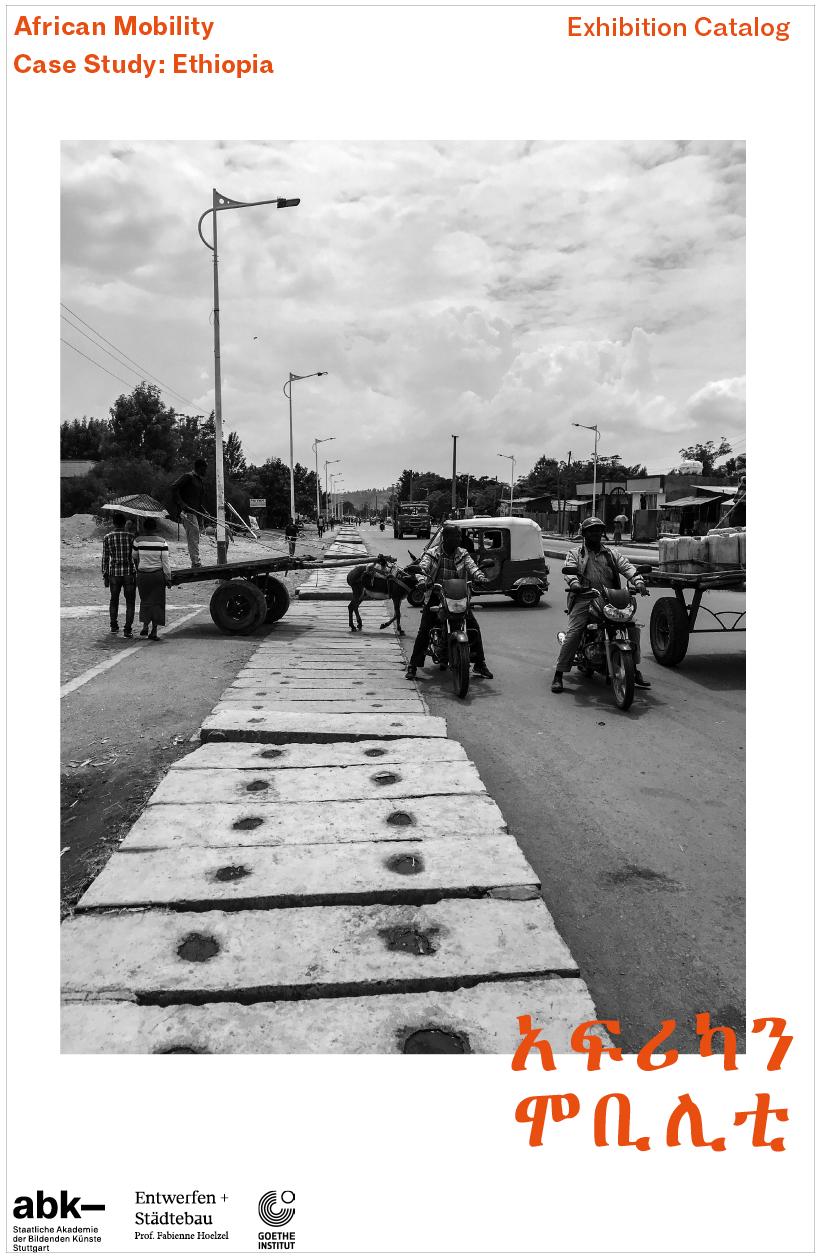Fabienne Hoelzel, Victoria Johann
Kalkidan Debela, Victoria Johann, Samia Matar, Abdelwehab Mohammed, Lena Obländer
Natalie Brehmer
2018

Between October 1 and 3, 2018, the results of the Urban Research Studio "African Mobility. Case Study. Ethiopia" were on display at the Goethe Institute Addis Abeba, launched with a lively and well-visited panel discussion. The small exhibition catalog summarizes the key findings.
The »Manifesto for the 21st Century Mobility« was developed by six students from Germany and Ethiopia, under the direction of Prof. Fabienne Hoelzel.
The current mobility behaviors and the growing comfort requirements in the (Western) urbanized and industrialized regions destroy the livelihoods of human beings, animals, and plants on this planet. For many reasons, these developments have not yet taken place on the African continent, or only to a limited extend. Ethiopia could play an exemplary role in rethinking mobility and urbanity due to its long-term isolation from global mainstream influences, and the various indigenous ways of life. The tradition of walking, the astonishing precision of low-tech modes of transportation, and the use of the street as a shared and public space of coexistence for all kinds of activities turn upside down the – perhaps – core principles of modern societies: time efficiency, economic growth, and competitiveness in all parts of life. What the economically more “developed” regions in this world are striving for – “sustainable” lifestyles and “using”/” sharing” instead of “owning” – has been practiced in many sub-Saharan regions for a long time. Against the backdrop of the environmental devastation of our planet mainly caused by the ever-increasing consumption of natural resources, notions of seeming backwardness might turn into perceptions of progressiveness.
The exhibition manifesto consists of the following five theses, illustrated by drawings, diagrams, and photographs:
1. Future mobility strategies eradicate modern colonization
2. The Ethiopian urbanity leads to the future mobility
3. The future African city is without roads
4. The future African mobility is beyond the car
5. Sub-Saharan mobility forms are on the cutting edge